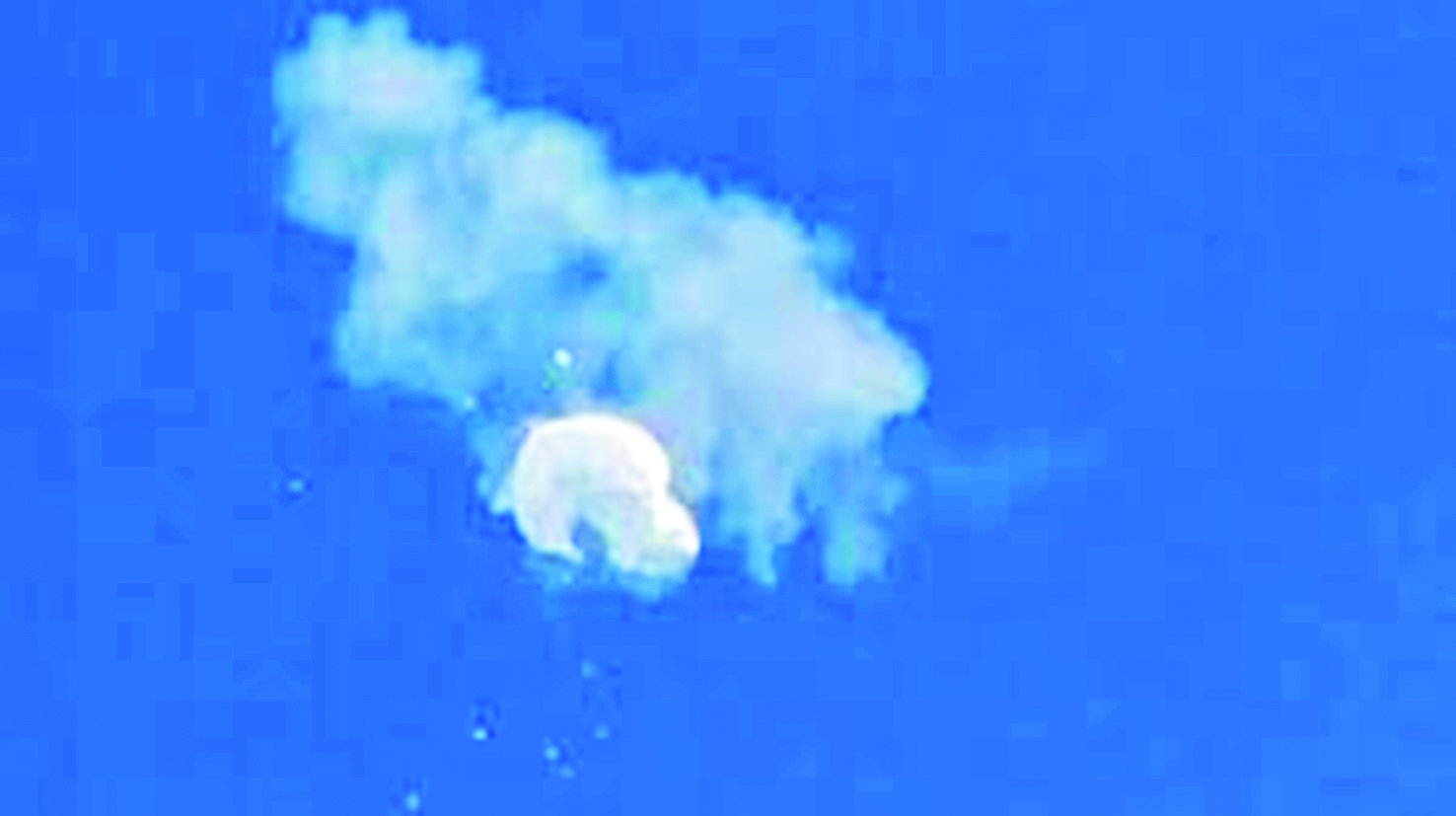
The recent spotting of a Chinese high-altitude surveillance balloon over the continental United States led to further strains in the already difficult bilateral relations between the U.S. and China, as Washington announced the cancellation of U.S. Secretary of State, Antony Blinken’s visit to Beijing. Pentagon press secretary Brig Gen Patrick Ryder had stated that the balloon was travelling at an altitude well above commercial air traffic and did not present a military or physical threat to people on the ground. However, the cancellation of Blinken’s visit shows the gravity of the situation.
On its part, the Chinese government stated that the balloon was merely a weather instrument that had accidentally strayed into U.S. airspace and that the vehicle had limited steering capabilities and deviated from its planned course owing to winds. A day after the Chinese spy balloon was detected in the U.S. airspace, another similar balloon was detected flying over Latin America. Pentagon press secretary Brig Gen Patrick Ryder stated that defense officials were assessing the second balloon. On 6 January this year, a similar balloon was spotted over Port Blair in India. While the origins of the balloons remained a mystery, it was the same type of reconnaissance balloon as has been spotted over the U.S. and Latin America.
The question that does arise in this context is why would China or any other country use a flying object to spy in this age of ultra-advanced satellites? For starters, the usage of a balloon always allows room for the excuse that the balloon deviated from its intended path owing to winds! In this context, what also becomes pertinent, is to understand the importance of surveillance for China. While it was not a spy balloon in December last year, China did use its spy ship Yuan Wang 5, fitted with several tracking and surveillance devices, which entered into the Indian Ocean region, ahead of India’s plan for a test firing of a long-range ballistic missile in the Bay of Bengal. In the context of the usage of spy ships, a few other examples include those from July 2018 when a Chinese navy spy ship entered Japanese territorial waters for the first time in over a decade, while tailing two Indian naval ships during the trilateral Malabar naval exercises between India, Japan and the U.S. Japanese P-3C patrol aircraft spotted the Dongdiao class intelligence vessel sailing in Japanese territorial waters to the west of Kuchinoerabu Island.
A month further back in June 2018, a flotilla of Indian warships comprising the newly inducted stealth anti-submarine corvette INS Kamorta, a tanker, spotted a Chinese warship tailing them at a safe distance. The Indian Navy warships were leaving Vietnam after exercising with the Vietnamese Navy. In 2013, the Indian Navy spotted a Chinese spy ship near the Andaman Islands. Further back, in 2011, a suspected Chinese spy ship camouflaged as a fishing trawler had been detected by the Indian Navy near the Andaman and Nicobar Islands to possibly keep an eye on Indian military activities in the area. The thousand grains technique becomes important in this context, as China uses the method to amalgamate disparate snippets of intelligence accessed from different sources. Any and all information collected through hardware, software and other vectors is sifted through by Chinese state agencies to create rich datasets to train algorithms. Information gathered by a large spy balloon would definitely be useful, as it flies over a large geographical area.
Given the fact that the balloon was never shot down by the U.S. and never identified by India when it flew over Port Blair, the exact technological capabilities for surveillance of the balloon remain unknown. However, the usage of espionage in myriad forms as an integral part of Chinese geopolitical policy is well known. As China continues making strides in technology, their alignment with the state’s goals become closer. China’s ‘Made in China 2025’, its Space and Technology Goals to 2050 and even Beijing’s 13th Five Year Plan all aspire to use technology for military purposes. The distinctions between information control, industrial policy, economic and political coercion, foreign policy get blurred as China seeks to use its technological prowess to challenge the world’s rules based international order. China is willing to take over the reins of control of the international system by all means possible, as it believes its time has come. The Chinese view of the existing multilateral world order is vertical instead of being horizontal. A horizontal distribution of power sees different poles or countries in the international system exerting varying levels of influence on the system, whereas a vertical distribution sees one country at the top commanding all other countries beneath it. For China, reaching up the top most position of the vertical world order as it sees it necessitates the usage of espionage. China’s usage of disparate tools of espionage, be it through naval ships or balloons, or human intelligence is only going to grow in the near future as shown by the frequency of the spotting of Chinese spy balloons in various parts of the world within a short span of mere weeks.
Dr Sriparna Pathak is an Associate Professor in the School of International Affairs of O.P. Jindal Global University.